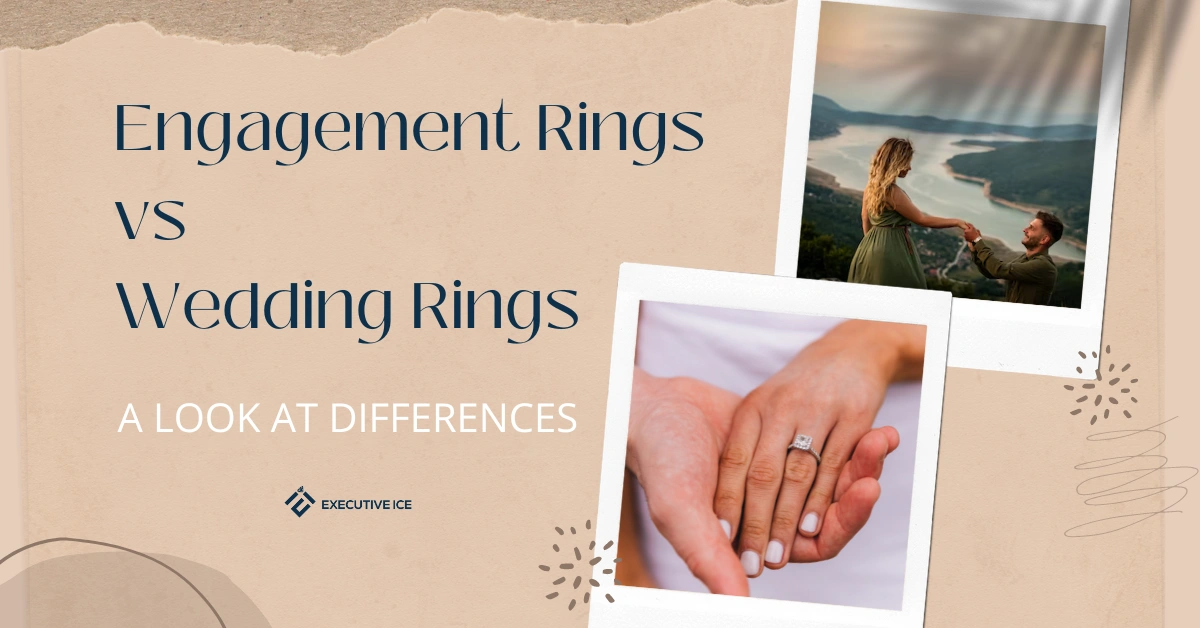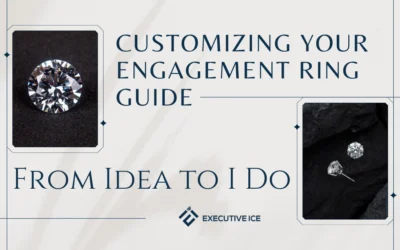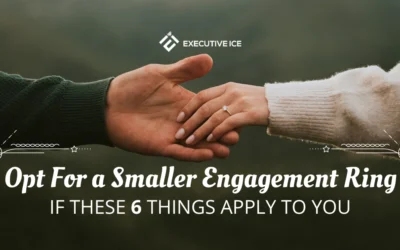Engagement and wedding days – these are two profound milestones in your life’s journey, made even more special with the exchange of distinct rings.
An engagement ring is pledged during a marriage proposal, signifying a promise of marriage. The wedding ring, on the other hand, is given during the actual wedding ceremony, affirming the bond and love between two people.
Intrigued about where to get the perfect ring? Check Out Our Top Diamond Engagement Ring Retailer Comparison Guide
Each ring has its traditional place – and in the US, it’s customary to wear your wedding ring on the left ring finger. But have you ever wondered why?
Once upon a time, people believed in a romantic notion that the left ring finger housed the “Vena Amoris” or “Vein of Love”, which connected directly to the heart. The wedding ring, when worn on this finger, was thought to be a symbol of love held close to one’s heart.
Even though modern science has debunked this sweet myth – all fingers have similar vein structures – the tradition of wearing the wedding ring on the left ring finger endures.
Planning on popping the question? Learn How to Craft the Perfect Marriage Proposal!
Now that we’ve got the traditions down, you might be wondering – what truly differentiates wedding rings and engagement rings? Stay tuned as we dive into these nuances!
Wedding Rings
The tradition of wearing wedding rings traces its roots back to ancient times. It’s a gesture brimming with symbolism – the ring, a perfect circle, represents a love without end, much like the eternity it symbolizes.
It’s a custom for the bride and groom to exchange these rings on their wedding day, a token of their unending commitment. These tokens are then worn on their left ring fingers.
Need help picking the perfect ring? Delve into our Complete Guide on Finding the Perfect Engagement Ring!
Of course, traditions can vary around the globe. In countries like Greece and Russia, wedding rings find a home on the right ring finger. In India, while rings can be worn on either hand today, tradition once favored the right hand, given the left was considered unlucky and unclean.
When we compare wedding rings to engagement rings, some differences become apparent. Wedding rings are typically plain metal bands, although some may be adorned with an encrusted eternity band of diamonds. It’s rare for wedding rings to feature a primary diamond – that’s a detail commonly associated with engagement rings.
Engagement Rings
Engagement rings, often seen as mere precursors to marriage, carry a certain charm that far outweighs their temporary status.
They symbolize a promise, a commitment yet to be fulfilled, and that gives them an allure that even wedding bands can’t quite capture.
This is evident when you browse through major online jewelry retailers. The spotlight is invariably on engagement rings – they’re the first items listed on menus and make regular appearances on homepages. Why is this so? The answer lies in their profound symbolic value.
The tradition of wearing engagement rings, initially worn on the right hand, emerged after wedding rings had established their place. This new addition needed a distinct position to denote an individual’s commitment to another, without the finality of marriage.
Don’t underestimate the significance of the engagement ring, though. Modern society often regards it as more important than the wedding band, placing considerable importance on its selection.
Commonly, engagement rings are adorned with a central diamond (or three, in the case of three-stone diamond rings), setting them apart from wedding rings. But it’s crucial to note that this is a tradition, not a necessity.
So if the question “does an engagement ring have to have a diamond” is weighing on your mind, rest assured, the answer is a resounding NO.
If a diamond is beyond your budget, don’t plunge into debt. Your partner should understand and appreciate your financial limitations, with the promise of a more extravagant ring in the future. In the meantime, you have a plethora of options at your disposal.
Consider lab-created diamonds, which are just as beautiful as their natural counterparts but significantly cheaper. Moissanite or cubic zirconia are great alternatives as well, or simply opt for a stylish, modern ring that lacks a diamond. Sometimes, the charm lies in simplicity.
Where to Wear Rings on Wedding Day and After?
During the whirlwind of your wedding day, you might be wondering about the proper etiquette for your rings. Normally, your engagement ring is temporarily moved to your right hand to make room for your wedding band on the left.
This places the band on the finger that’s traditionally seen as closest to your heart.
As the ceremony progresses, your partner will slide the wedding band onto your left ring finger. Afterwards, you can place your engagement ring back on that finger, nestling it atop your wedding band.
Some brides prefer to fuse the two rings together, symbolizing an unbreakable bond, or simply to reduce the hassle of wearing two rings. Others might choose to don only the wedding band post-wedding, either for simplicity’s sake or practical reasons.
Ultimately, how you choose to wear your rings is a personal decision. Tradition suggests the left ring finger, but in our modern age, what truly matters is your comfort and happiness. Remember, this celebration revolves around you and your partner.
Your rings are symbols of your commitment, and how you choose to display them should reflect your unique bond.
Engagement Ring vs Wedding Rings Comparison Summary
Engagement and wedding rings, symbols of promise and eternal love, are milestones in one’s life journey.
Despite an old belief connecting the left ring finger directly to the heart, all fingers have similar vein structures; yet the tradition of wearing the wedding ring on the left ring finger endures.
While engagement rings often take center stage due to their symbolism of a commitment yet to be fulfilled, it’s important to remember that diamonds aren’t a necessity.
On the wedding day, the engagement ring is moved to the right hand, making room for the wedding band on the left. Some prefer to fuse the two rings together, or to wear only the wedding band afterwards, ultimately a personal choice reflecting your unique bond.




